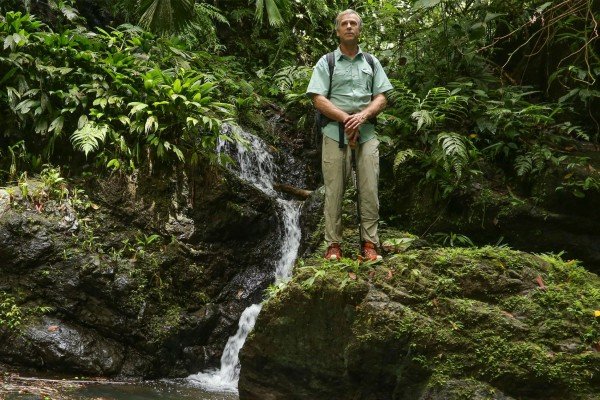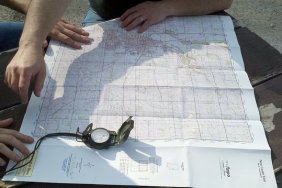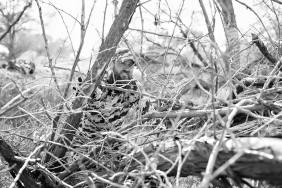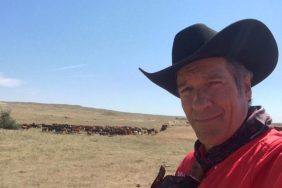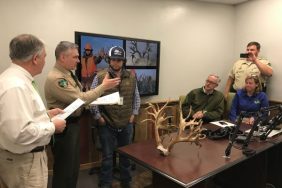Like thousands of viewers of Nat Geo Channel’s Missing Dial, I was captivated by this documentary series about a murder investigation in the Costa Rican jungles. A 27-year-old adventurer named Cody Roman Dial — son of famed explorer Roman Dial — had gone missing and this was the story of a father’s quest to find answers.
I was especially drawn to the story because it could have been me. I too had traveled to this part of the world as a young man. So I had been watching the show, anxiously awaiting each week the release of the next episode, but hadn’t done any of my own reading into the story. All the better as what unfolded was one hell of a mind-blowing story. (Spoiler alert in case you plan on watching the series unadulterated.)
That’s because just days before the first episode aired, they had an entirely different story line then they had been led to believe for most of the entire series, that Cody was murdered. The last minute twist led to quick wrap up in the final episode with lots of unanswered questioned. And it seems Nat Geo will not be offering answers anytime soon.
@CarsonUlrich Is there another episode of #missingdial? I have so many questions!!!
— Kitty Marie (@kittynurse108) July 5, 2016
Just days before the first episode aired on May 23, authorities had discovered the body of Cody Roman Dial. He was not the victim of murderous thugs who fed his bodies to sharks, as the series led viewers to believe, but rather the victim of an unfortunate accident when a tree fell on top of him.
So what happened? Had we witnessed the case of a false confession by some serious overzealous investigators, or just an honest mistake that pushed some people too far? How the television series came to be might shed some light.
RELATED: Starving and Scared – Jens Rasmussen on Nat Geo’s Mygrations
It was almost two years since Cody went missing in Costa Rica’s Corcovado National Park on the Oso Peninsula. In the months after his disappearance, his father Roman had been frustrated by the search and investigation. With his personal search thwarted by an overly protective park service who wouldn’t allow him within the park, Roman did an interview with Men’s Journal for an in-depth story about the case. It was through that story television producers contacted him.
At first Roman said he ignored the producers until they appealed to his wife. “[One of the producers] said that his father had been murdered in Honduras and he had been unable to get his father’s killer convicted over a ten-year period until he involved television cameras,” Roman revealed in a recent follow-up after the series had aired. “So he said, ‘Why don’t you let us try to help you solve this?'”
There was a certain finality to it that was sad, but actually more of a relief than anything else. I felt like I had been under water for two years and I couldn’t breath and I’d finally come to the surface for air.
From there Roman began to see the mutually beneficial relationship. They would help him solve his son’s disappearance and he would help them make a documentary. But don’t call it a reality TV show. They assured Roman it would not be manipulated. And that was the difference between reality TV and a documentary, he figured. What they produced, meanwhile, is nothing short of the most gripping television.
The producers hired former DEA agent Carson Ulrich and parajumper Ken Fournier, who knew Roman. To make a long story short, they got keyed into a story of a man named Jose “Pata de Lora” who had been seen with another white backpacker. At first he said it wasn’t Cody, but when others said it was the missing backpacker, Pata said it was him. Around town, people were accusing him of killing the young man.
Pressed to reveal details, Pata told a different story. After several interviews he finally confessed during an intense stand-off in the jungle where admited to being there when Cody was abducted and that the miners Guicho and his sons were the ones who killed him. Then the story changed and changed again. It wasn’t Guicho and Mario. Then Mario wasn’t there. Nobody knew what to believe, which was a major source of distrust.
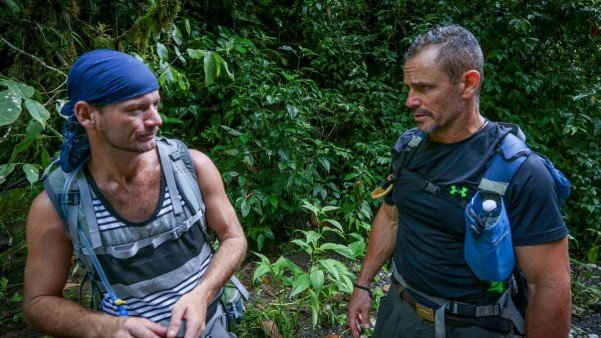
In the end, Cody was discovered to be have been the victim of a fallen tree. While camping by a creek a tree rotted from the rains, fell on top of him. The location was just a few miles from where he was last seen. He never came out of the jungle. He never met with Pata de Lora. It was just an unfortunate accident.
To his credit, Roman felt all along that it wasn’t Cody that Pata was describing.
“I knew my son, and he would have never gone with Pata. Number one, Pata de Loro, as I got to know him, is not the type of person my son would have hung out with. And then number two, Everybody who saw him said “Oh, he had a GPS.” So [Cody is] on a trail with a GPS and a guide? That’s kind of like wearing a onesie with suspenders and a belt.”
On the discovery of his death and conclusion to the mystery, Roman described a great weight lifted off his shoulders.
“I can’t say I was shocked,” he told Men’s Journal. “I definitely wasn’t shocked because I’d expected him to be dead for the last 18 months or so. So I wasn’t surprised. I wasn’t crushed that he was dead. I mean, I have the chronic pain that will never go away, but I have to say that, maybe, I was a bit relieved… I was relieved that it looked like it was just a natural death. That it wasn’t murder. And also, I was, um, the word’s not “satisfied,” I’m not quite sure what the word is… but he was where he said he was going. He was doing exactly what he said he was going to do.”
So what happened to Pata? Donde esta Pata?
For an in-depth conversation about the case with Roman Dial visit Men’s Journal.
For a behind-the-scenes look at the making of Missing Dial visit National Geographic.
Photo credit: National Geographic
